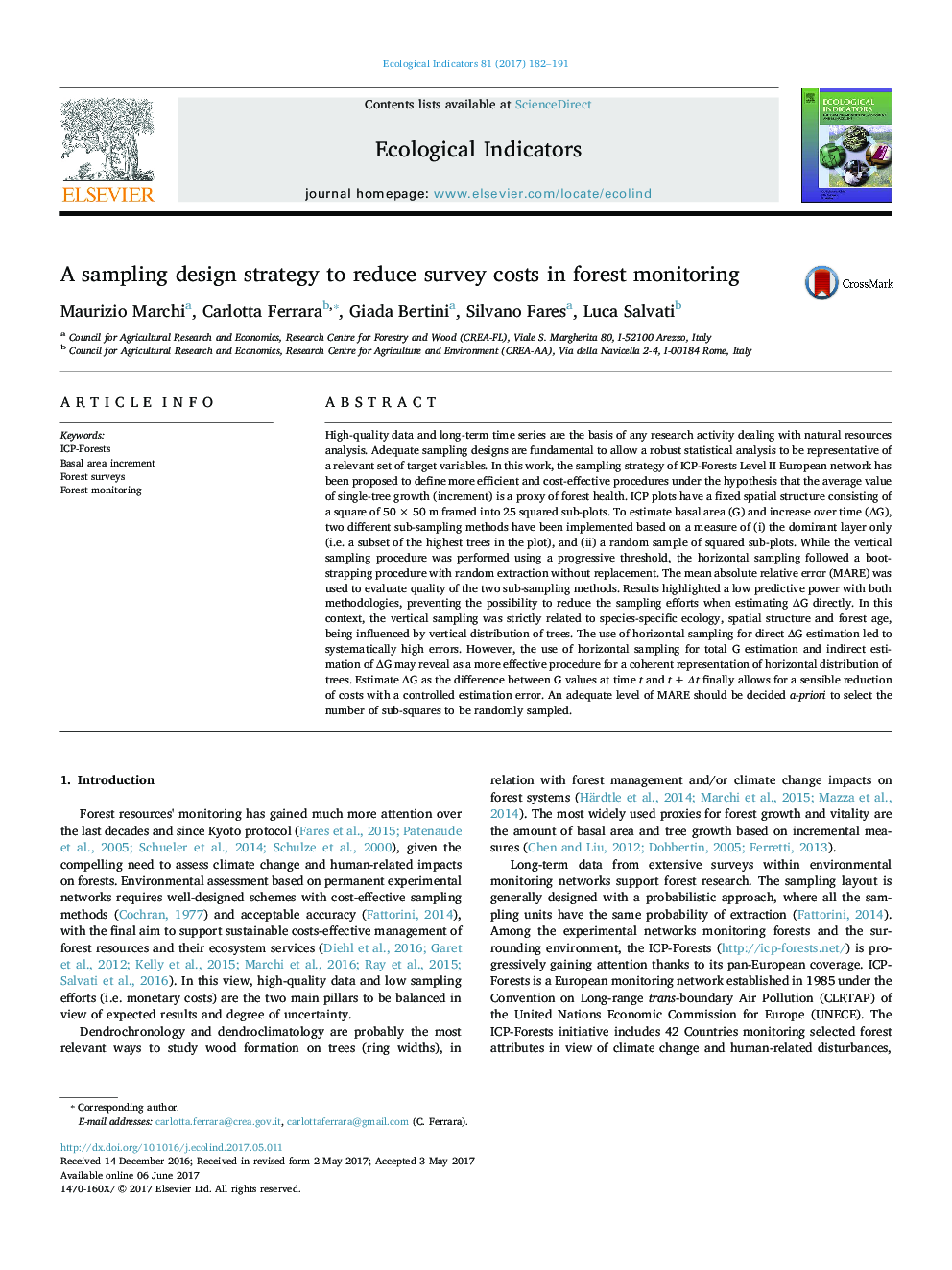| Article ID | Journal | Published Year | Pages | File Type |
|---|---|---|---|---|
| 5741422 | Ecological Indicators | 2017 | 10 Pages |
â¢A horizontal sub-sampling procedure can be successfully applied in all the ICP-Forests plotsâ¢The basal area CV across 25 sub-squares of a single ICP-Forests plot influences a horizontal sub-sampling strategyâ¢The basal area increment could be effectively estimated with lower costs and with a statistically-controlled error
High-quality data and long-term time series are the basis of any research activity dealing with natural resources analysis. Adequate sampling designs are fundamental to allow a robust statistical analysis to be representative of a relevant set of target variables. In this work, the sampling strategy of ICP-Forests Level II European network has been proposed to define more efficient and cost-effective procedures under the hypothesis that the average value of single-tree growth (increment) is a proxy of forest health. ICP plots have a fixed spatial structure consisting of a square of 50 Ã 50 m framed into 25 squared sub-plots. To estimate basal area (G) and increase over time (ÎG), two different sub-sampling methods have been implemented based on a measure of (i) the dominant layer only (i.e. a subset of the highest trees in the plot), and (ii) a random sample of squared sub-plots. While the vertical sampling procedure was performed using a progressive threshold, the horizontal sampling followed a bootstrapping procedure with random extraction without replacement. The mean absolute relative error (MARE) was used to evaluate quality of the two sub-sampling methods. Results highlighted a low predictive power with both methodologies, preventing the possibility to reduce the sampling efforts when estimating ÎG directly. In this context, the vertical sampling was strictly related to species-specific ecology, spatial structure and forest age, being influenced by vertical distribution of trees. The use of horizontal sampling for direct ÎG estimation led to systematically high errors. However, the use of horizontal sampling for total G estimation and indirect estimation of ÎG may reveal as a more effective procedure for a coherent representation of horizontal distribution of trees. Estimate ÎG as the difference between G values at time t and t + Ît finally allows for a sensible reduction of costs with a controlled estimation error. An adequate level of MARE should be decided a-priori to select the number of sub-squares to be randomly sampled.
